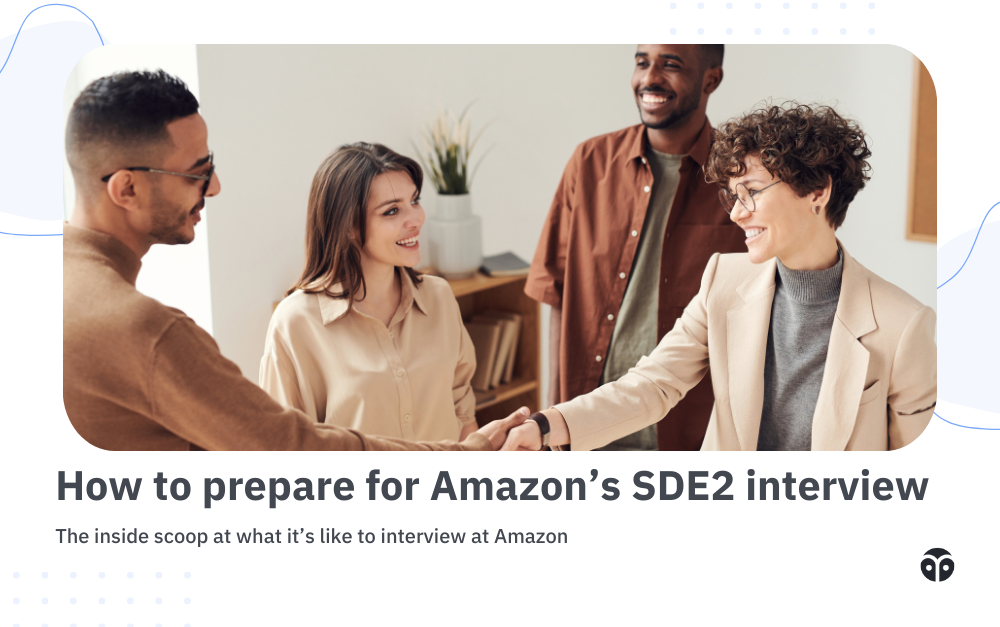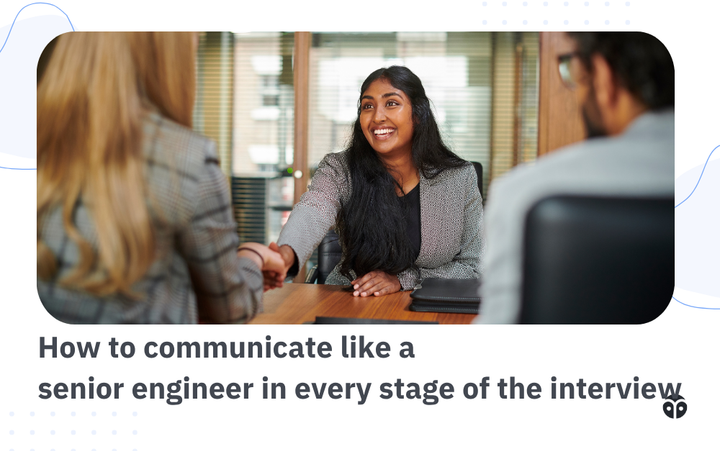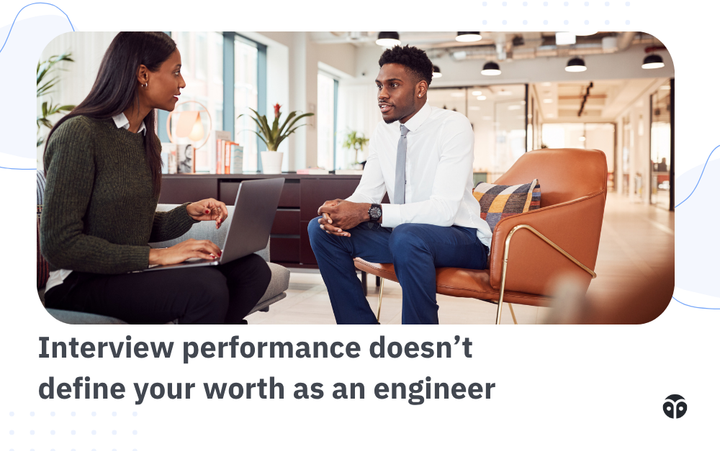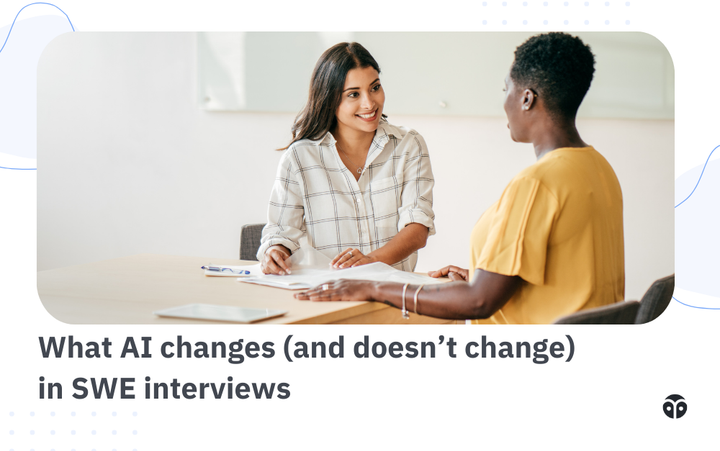How to prepare for an SDE2 interview at Amazon
Everything you need to know about passing the Amazon SDE2 interview process.

Michael Shao is a Bar Raiser at Amazon, which acts as an unbiased third party to the hiring loop. Bar Raisers represent the objective third-party view and help determine whether or not a candidate is a good fit for a role at Amazon. He’s interviewed hundreds of candidates and helped produce the Online Assessment (OA) for the Amazon hiring process. He’s also a Mentor at Formation, and gave us his insight into what it takes to pass an interview loop at Amazon.
Amazon is often at the forefront of technology and innovation, offering software engineers the opportunity to work on cutting-edge projects that have a global impact. The chance to work on impactful projects and continuous learning opportunities makes Amazon an attractive employer for SDEs, and the interview process at Amazon is rigorous.
Here’s how to prepare effectively for each interview stage with tips on handling leadership principle questions, coding challenges, and more.
Amazon’s values and priorities: Amazon Leadership Principles
Amazon culture is driven by Jeff Bezos famous “Day 1” mentality. Employees are independent, capable leaders and owners. Two-way door decisions (decisions that are reversible) are encouraged, and high value is placed on employees being able to take ownership and responsibility.
The company strongly emphasizes its 16 leadership principles (LPs), which guide its employees' actions and decision-making processes. In any interview at Amazon, you can expect to be asked two questions about these principles. These questions, guided by the LPs, serve as Amazon's behavioral assessment.
For example, "Tell me about a time when you took on something outside your normal responsibilities" is a common interview question. A good answer (try following the STARR method) will show the interviewer how you read situations, your willingness to lead, how you approach teamwork, and whether you are willing to jump in and help in areas outside your typical scope of work. Remember to use “I” statements instead of “we” statements to highlight what you specifically accomplished rather than showcasing what the entire team did.
Amazon’s behavioral interviews are rooted in behavioral-based questions. You will be asked about past situations or challenges you’ve faced, using our leadership principles to guide our discussion.
How to prepare:
- Familiarize yourself with all 16 leadership principles.
- Prepare stories from your past experiences that demonstrate these principles.
- Focus on themes like conflict resolution, handling deadlines, managing multiple priorities, and influencing your team.
- Practice using the STAR method.
- Frame your examples in relation to the Leadership Principles.
- Ensure each answer has a beginning, middle, and end.
- Describe the situation or problem, the actions you took, and the outcome.
- Prepare short descriptions of a handful of situations.
- Be ready to answer follow-up questions in greater detail.
- Select examples that highlight your unique skills.
- Have examples that showcase your experience and how you’ve taken risks, succeeded, failed, and grown.
- Specifics are key. Avoid generalizations.
- Don't embellish or omit parts of the story.
- Give a detailed account of one situation for each question you answer.
- Use data or metrics to support your example.
How to prepare for the recruiter screen at Amazon
The recruiter screen is the first step in the interview process. During this call, the recruiter will try to understand your interests, experiences, and whether you are a good fit for the role. Typically, there are no technical questions during this call. Some teams at Amazon incorporate role-specific exercises or online assessments into the interview process. You will be notified in advance if the role you’re interviewing for requires one of these.
Preparation tips for the recruiter screen:
- Be ready to walk through your career experiences and discuss high-level projects you’ve worked on.
- Be ready to explain the scope of your responsibilities and the impact of your work.
- Know how to highlight your technical stack experience and how it aligns with the role you are applying for.
How to prepare for Amazon’s online assessment
The online assessment (OA) for SDE2 roles at Amazon is a timed, asynchronous assessment. There are three sections in the OA. In the first section, you’ll be asked to solve two coding problems. The coding assessment section of the OA evaluates your knowledge of basic programming constructs, data structures, and algorithms. It’s used to assess your knowledge of computer science fundamentals (e.g., data structures and algorithms), your approach to problem-solving, and the clarity, maintainability, and efficiency of your code.
Once the 90-minute timer for the coding portion starts, it doesn’t stop, even if you exit. Check the timer regularly. Your code must compile for all questions in order for you to move forward in the interview process. Test your code and ensure it runs before you submit it or before time runs out. You can compile your code as many times as you like, but there must be a 15-second interval between consecutive compilations.
The second section is built around Amazon’s Leadership Principles - it asks you to choose statements that best represent your work style - no practice is needed for this portion.
Finally, the third section is a work simulation designed to give you a look into the typical “day in the life” of an SDE at Amazon. During the simulation, you’ll be prompted with emails, videos, and instant messages from your virtual managers and teammates to solve problems. For each scenario, you’re provided with multiple-choice options (4 or 5) to respond to.
Preparation tips for the OA:
- Practice coding problems. Try the OA demo available through Amazon.
- Familiarize yourself with the engineering method to help you think through problems.
- Practice thinking through possible edge cases and scenarios that could break your code and accounting for them.
- Efficiency and optimization earn more points than brute-force solutions.
- Ensure your solutions consider all edge cases and handle large inputs effectively.
- You may select from any of the following languages: C, C++, C++14, C#, Go, Java7, Java8, JavaScript, Kotlin, Objective-C, PyPy2, PyPy3, Python2, Python3, Ruby, Scala, and Swift.
- Be prepared to document your approach if you get stuck.
How to prepare for Amazon onsite interviews
An onsite interview for an SDE II role at Amazon involves four interviews: one focused on system design and three interviews focused on coding. One interview is with a hiring manager, and one interview is with a Bar Raiser. The coding interviews cover three specific competencies: logical & maintainable, problem-solving, and data structures and algorithms. The onsite coding interviews are similar to Meta’s interview process, where coding is whiteboard style (on a digital coder-pad).
- Problem-Solving: This competency assesses your ability to take something complex, break it down, identify a solution and translate that solution into working code. These questions will most likely have an ambiguous problem statement. It may be more difficult to understand what the problem is and you will need to ask clarifying questions to understand how you can start to solve the problem.
- Logical and Maintainable: This competency measures your ability to write maintainable, readable, reusable, and understandable code.
- Data Structures and Algorithms: This competency measures your ability to choose the most efficient run-time solutions. For example, different data structures are more performant for reading data while others are more performant for writing. Algorithms should be as fast as possible and, of course, solve the problem correctly. Look out for edge cases for which your algorithm fails to satisfy requirements.
The system design competency is designed to measure your ability to black-box design a software system. The goal is for you to deliver a design in production, considering deployment, scaling, failures, availability, and performance. Be prepared to discuss latency and concurrency.
Note: For the system design competency, there's often more than one correct answer. What matters is your process for how you arrive at the solution.
Each interview includes two behavioral questions based on Amazon's leadership principles. In a 60-minute interview, expect 20-25 minutes of behavioral questions and the rest on technical topics, with one main question per round.
Preparation tips for the onsite:
- Participate in mock interviews.
- Prepare answers to behavioral questions.
- Prepare to ask your own questions during the onsite loop.
Offer, Team Matching, and Negotiations
If you pass the onsite interviews, you will receive an offer and proceed to the team-matching phase. This involves two-way interviews where you can ask pointed questions to determine if the team is a good fit for you. It also gives you a chance to pitch yourself for your desired team.
Preparation tips for offers and team matching:
- Prepare questions to ask the team that will tell you about their culture and priorities.
- If you have a desired team or leader you’d like to work for, prepare the reasons why you think you would be the best person for the role and how your abilities align with the team's needs.
- Make sure you understand the components of an offer and research negotiation practices.
Get holistic interview prep and negotiation support with current + former Amazon SWEs
The Formation Fellowship gives mid-level and senior engineering job seekers everything they need to land their dream roles—including personalized skill brush-ups, unlimited mock interviews with experienced software engineers and hiring managers from top-tier tech companies, and offer reviews and negotiation support.
Apply here for unconditional support from a team of engineering mentors, technical recruiters, career coaches, and more.



